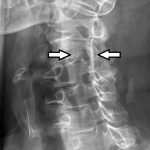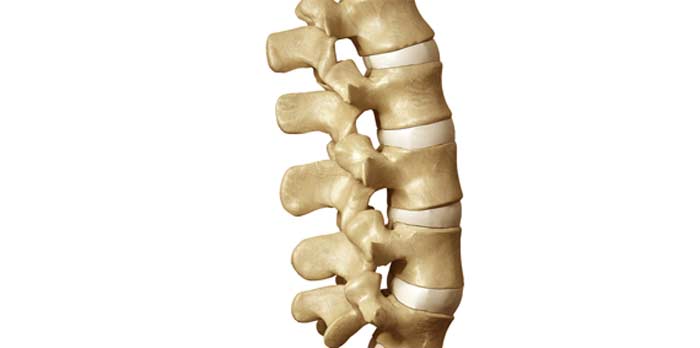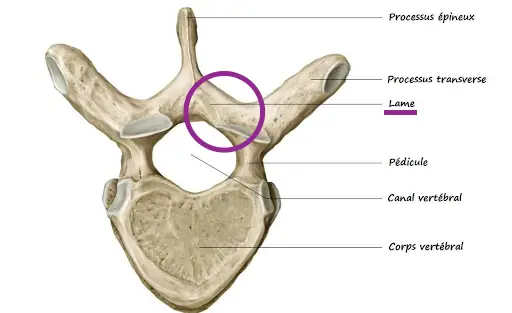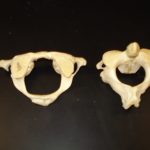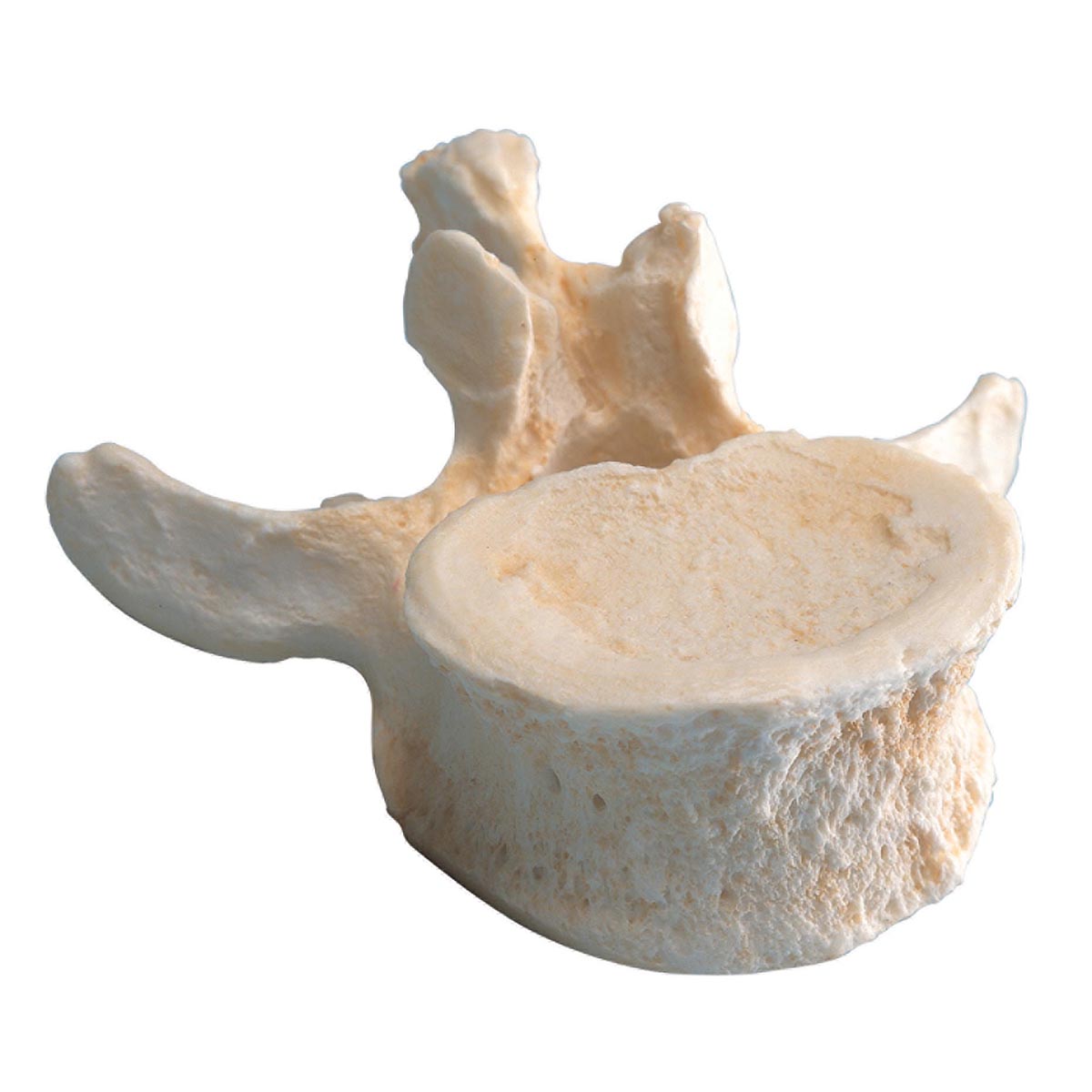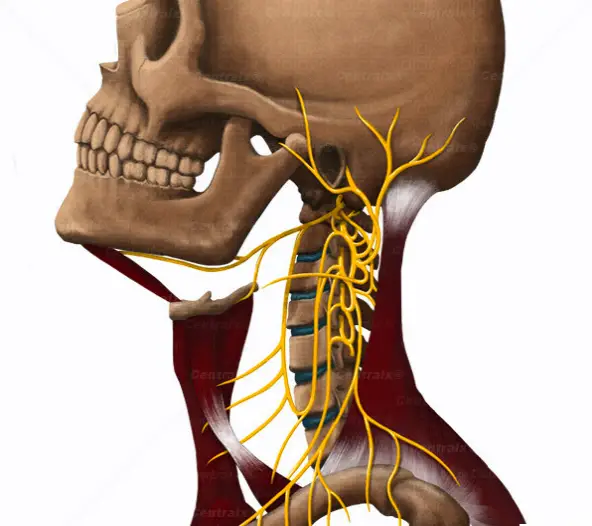Narrowing of the cervical foramen is a disease that affects the roots of the spinal nerves. It occurs when the space between the pedicles of two vertebrae successive becomes narrower. This can lead to compression of the roots of the spinal nerves, which in turn can cause different pathologies.
In this article, we look at the definition and pathologies associated with narrowing of the cervical foramen.
Cervical Spine Anatomy
La cervical spine consists of a group of seven vertebrae that extends from the base of the skull to the first thoracic vertebrae. The first two vertebrae have a particular form and function. The skull rests on the first vertebrate, called atlas, which serves as a point of support.
This allows the head to move back and forth, for example when you say "yes". The second vertebra, called the axis or axis, is below the atlas and is used to turn the head. A bony prominence of the axis, called a dent, articulates with the atlas, allowing the head to be turned from side to side, like when you say no.
The remaining five vertebrae serve to support the weight of the body. Surrounding these vertebrae are muscles, ligaments, blood vessels and nerves. Furthermore, the intervertebral discs between each vertebra serve as a cushion to cushion injuries to the spine. The role of the cervical vertebrae is to support the structures of the head and neck and allow them great flexibility of movement.
Conjugation hole: Definition
The intervertebral foramen, commonly known as the foramen, is an essential structure of the spine. This is the area between two adjacent vertebrae through which the spinal nerves pass. This is where the spinal nerve roots, anterior and posterior, come together at the outer part of this foramen to form the spinal nerve.
The foramen is formed by the pedicles of the vertebrae, which are bony projections with concave edges. The spinal cord and its nerves are responsible for transmitting signals between the brain and the rest of the body.
This communication is essential for muscle movement, sensation, and many other vital functions. When the foramina narrow, they can interfere with this communication and cause problems such as pain, muscle weakness, and numbness.
Causes of narrowed cervical foramen
A narrowing of the cervical foramen can lead to compression of the spinal nerve roots. This phenomenon can in turn lead to various pathologies, including:
1. Osteoarthritis
Osteoarthritis is a degenerative joint disease. It is characterized by the destruction of the cartilage that covers the end of the bones. This can lead to inflammation, pain, and stiffness in the affected joints.
2. Discarthrosis
Discarthrosis is a condition characterized by a dislocation or loss of balance of the intervertebral disc. This can lead to pressure on the spinal nerve roots and pain.
3. Cervical hernia
La cervical hernia is a condition in which the nucleus pulposus, or inner core of the intervertebral disc, protrudes through the annulus fibrosus, or outer layer of the disc. This can put pressure on the spinal cord or spinal nerve roots and cause pain.
4. Uncodiscarthrosis
Uncodiscarthrosis is a condition characterized by the growth of excess cartilage between the vertebrae of the spine. This can lead to the vertebrae fusing together, which can eventually lead to problems with movement and function.
5. Narrow cervical canal
Cervical stenosis is a condition in which the cervical canal narrows. This can be due to a variety of reasons, including scar tissue buildup, tumor formation, or the natural aging process.
Un narrow cervical canal can put pressure on the spinal cord and nerves, and can also interfere with the flow of blood and other fluids. This can lead to a variety of symptoms, including pain, numbness, weakness, and difficulty walking. In severe cases, it can even lead to paralysis.
6. Cervical spondylolisthesis
Le spondylolisthesis Cervical is a medical problem that involves the slipping of the vertebrae in the neck. This condition is most often due to degenerative changes in the spine, but it can also be caused by trauma. Symptoms of cervical spondylolisthesis include neck pain and stiffness, headaches, and difficulty swallowing.
Symptoms associated with narrowed cervical foramen
Symptoms associated with narrowing of the cervical foramen vary depending on the condition, level of inflammation, and extent of nerve damage. Typically, patients with this condition have neck pain and may have neurological signs such as paresthesias (numbness or tingling), weakness or difficulty moving the arms or legs.
In cases where the spinal cord is affected, this can lead to incontinence, paralysis or other serious complications. We then speak of narrow lumbar canal (spinal stenosis), and people with symptoms of spinal cord injury should see a doctor as soon as possible. This is a medical emergency that requires prompt treatment.
Diagnosis of cervical foramen narrowing
The diagnosis of a narrowing of the cervical foramen is made based on the symptoms and signs present. A physical exam will be done to assess the range of motion of the neck and any pain or tenderness. Neurological tests will be done to assess the presence of nerve damage.
Imaging studies, such as X-rays, CT scans, and MRIs can all be used to support the diagnosis and identify affected anatomical levels and structures.
Conjugation hole: What to do?
If you are experiencing symptoms associated with narrowing of the cervical foramen, it is important to seek medical attention as soon as possible. Treatment options will be based on the underlying condition. In general, conservative management options include
- Rest ;
- Ice ;
- The heat ;
- Kinesitherapy (physiotherapy);
- And the drugs.
If these measures are ineffective, surgery may be required. Treatment may include the following:
- Disc decompression: This is a surgical procedure in which the disc is removed to relieve pressure on the spinal cord or nerve roots.
- Merge: This is a surgical procedure in which two or more vertebrae are joined together. This helps stabilize the spine and reduces pressure on the spinal cord or nerve roots.
- Artificial disc replacement : This is a surgical procedure in which the damaged disc is removed and replaced with an artificial disc.



